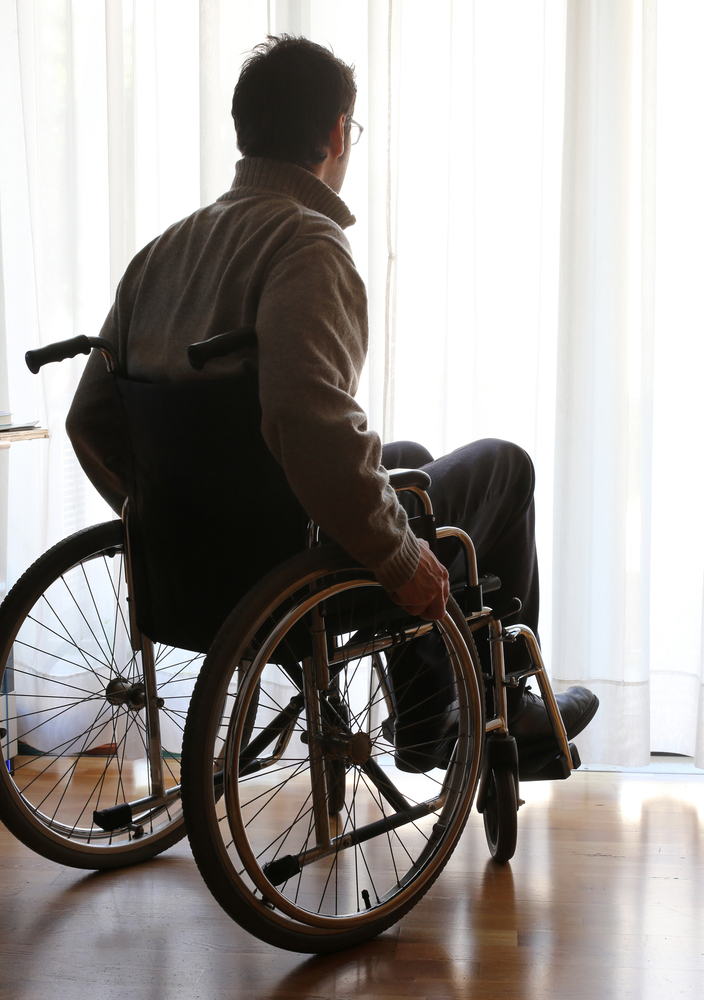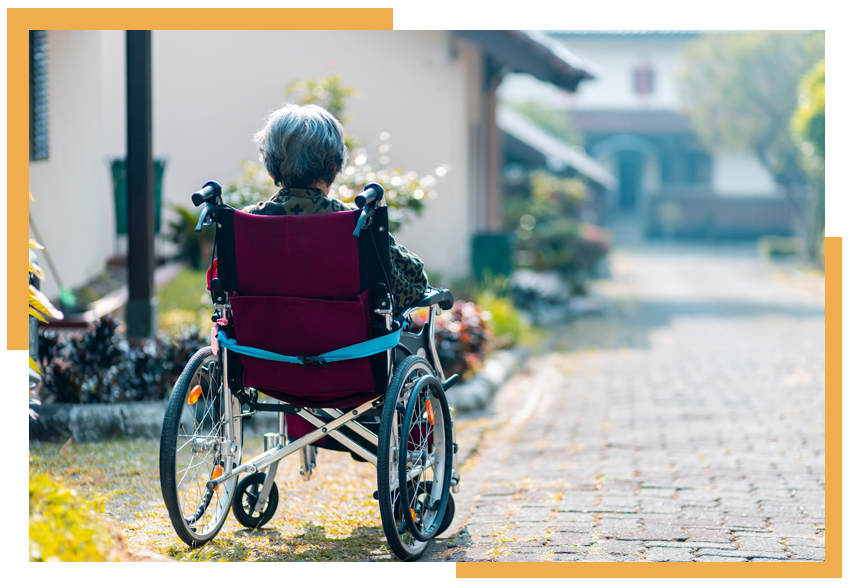Physical Therapy for Ataxia
Get customized physical therapy for ataxia and occupational therapy treatment from our clinic. We provide both physical and occupational therapy services to help you lead a more independent life.

What is Ataxia?
Ataxia is defined as the loss of full control of bodily movements. It’s normally a sign of an underlying condition and not a disease in and of itself. The condition can affect various movements, causing complications with swallowing, speech, eye movement, etc. Persistent ataxia is commonly a result of damage to the cerebellum, which is the region of the brain responsible for balance, coordination, and posture.
Ataxia affects people of all ages, and its symptoms are varied from person to person and the type. The condition can develop over time or come on abruptly. Our ataxia therapy services help to improve motor skills.

Schedule an appointment today
to see why our family of stroke experts can help you and your family on your path to independence.
Causes of Ataxia
It may be hereditary. Hereditary Ataxias are genetic. This means that they’re caused by a certain gene defect that is inherited from parents. It can be inherited from a dominant gene (autosomal dominant: spinocerebellar ataxia, episodic ataxia) or a recessive gene (autosomal recessive: Friedrich’s ataxia, ataxia-telangiectasia, congenital cerebellar ataxia).
If inherited from a recessive gene, neither parent may have the disorder (silent mutation). So, it can be passed on in the family for generations without being recognized.
Alcoholism
Cerebellar ataxia can result from alcoholism. The condition mostly affects the legs and may have little to no impact on speech and legs. Therefore, it affects walking style and gait.
Autoimmune Diseases
Conditions like multiple sclerosis, celiac disease, and other autoimmune conditions can cause ataxia.
Cerebral palsy
Head trauma can cause acute cerebellar ataxia, which comes abruptly.
Infections during the healing stages of a viral infection can cause ataxia but may be uncommon. It’s common for this form of ataxia to heal over time.
Paraneoplastic syndromes
- Stroke
- Tumors
- Vitamin Deficiencies
Signs and Symptoms of Ataxia
- Poor balance and coordination
- Loss of coordination in hands, arms, and legs
- Decreased control over fine motor skills
- Wide-based gait
- Slurred speech
- Difficulty eating (swallowing)
- Nystagmus
Ataxia Treatment Through Physical Therapy And Occupational Therapy
There is no specific treatment for ataxia. Sometimes treating the underlying cause, such as stopping trigger medications or increasing vitamin levels, resolves the ataxia. Treatment for ataxia involves a combination of medication to treat symptoms and therapy to improve quality of life.
Staying active is a vital part of the treatment plan for those with ataxia. Adaptive devices may be useful for managing the condition to allow the person affected to improve the quality of life and help maintain as much independence as possible. Adaptive devices may include hiking sticks, walkers, modified utensils, communication aids, etc.
Therapy is used to help symptoms such as tremors, stiffness, depression, spasticity, and more. Physical therapy may be used to improve coordination and mobility. Ataxia occupational therapy may be used to improve daily living tasks, such as feeding. Speech therapy may be used to improve slurred speech and difficulty eating/swallowing.
Ataxia Occupational Therapy
As the disease progresses, symptoms become worse. They include loss of muscle control affecting activities of daily living, leading to walking difficulties, fatigue, slurred speech, and loss of fine motor control. Since there is no cure for the condition, patients can also only manage it. Occupational therapy interventions for ataxia helps with the management of the disease.
An occupational therapist identifies areas that cause problems and offers advice on how the issue can be resolved. They teach patients techniques for making lives easier. Occupational therapists help with:
Strategies and Techniques
Ataxia occupational therapy can involve teaching patients and caregivers the best strategies to deal with fatigue. Additionally, patients learn how to cope with the mobility challenges and the recommended aids.
Assistive technologies
Since mobility becomes challenging and the patient constantly experiences fatigue, the OT recommends the devices that can help make some tasks easy to carry out. Patients with tremors or poor coordination can benefit from electronic devices with bigger buttons, making them easy to press. Where a mouse and a keyboard become challenging, they can recommend the patient uses voice-activated software.
Mobility Aids
Difficulty walking is one of the main symptoms of ataxia. Over time, patients lose their mobility, and they are required to use a wheelchair. An ataxia occupational therapist normally recommends the best mobility devices you or your loved one can use. We also decide the right time for the patient to start using a wheelchair and teach them how to use it.
Changing the Environment
Ataxia therapy will also involve adjusting a patient's environment, helping them overcome everyday challenges. For example, when there is a balance issue, the occupational therapist can assess the home and recommend nonslip mats. They can also advise on railing installation to improve mobility.
Ataxia Physical Therapy
Apart from occupational therapy, ataxia physical therapy also helps patients manage this condition. The goal of physical therapy is to prolong the ability to walk and increase the quality of life, so ataxia treatment through physical therapy can be effective.
Before starting PT, the therapist conducts a thorough examination. It entails assessing patients’ complaints, balance, posture, functional abilities, foot alignment, endurance, gait, range of motion, and cardiovascular activity. After getting the information, the therapist designs a treatment plan suitable to your needs. Friedrich’s ataxia physical therapy treatment exercises include:
Strengthening Exercises
These exercises are mostly low-intensity aiming to prevent immobility. They also preserve the upper and lower extremities. During the exercises, the physical therapist is careful not to cause fatigue.
Balance Exercises
These exercises help with maintaining or improving stability as you walk, sit, stand, or move around. Patient education helps train the patient on the best way to do these exercises to avoid falling. Starting early treatment helps prolong mobility.
Conditioning
Moderate cardiovascular exercises help patients with these conditions. Swimming, water exercises, or using a stationary bike can help improve balance and coordination.
Stretching Exercises
Stretching exercises help to relax the tightened muscles due to foot deformities. When patients are using a wheelchair, they also need to perform hamstrings and hip stretches to prevent permanent muscle shortening.
Gait Training
Gait training exercises facilitate a sense of motion, balance, and position. During ataxia exercises for physical therapy, patients need to watch movement, which helps provide feedback to the brain leading to gait training. The coordination activities can also include activities of daily living such as writing, cooking, dancing, or doing crafts.
OneRehab | Richardson
1761 International Pkwy Suite 135, Richardson, TX 75081, United States
OneRehab | Dallas
6080 N Central Expy #125 Dallas, TX 75206
Email Us
info@onerehab.com
Call Us
972 845 7875
Working Hours
M - F 7:00 AM – 7:00 PM
Sat 8:00 AM – 2:00 PM



